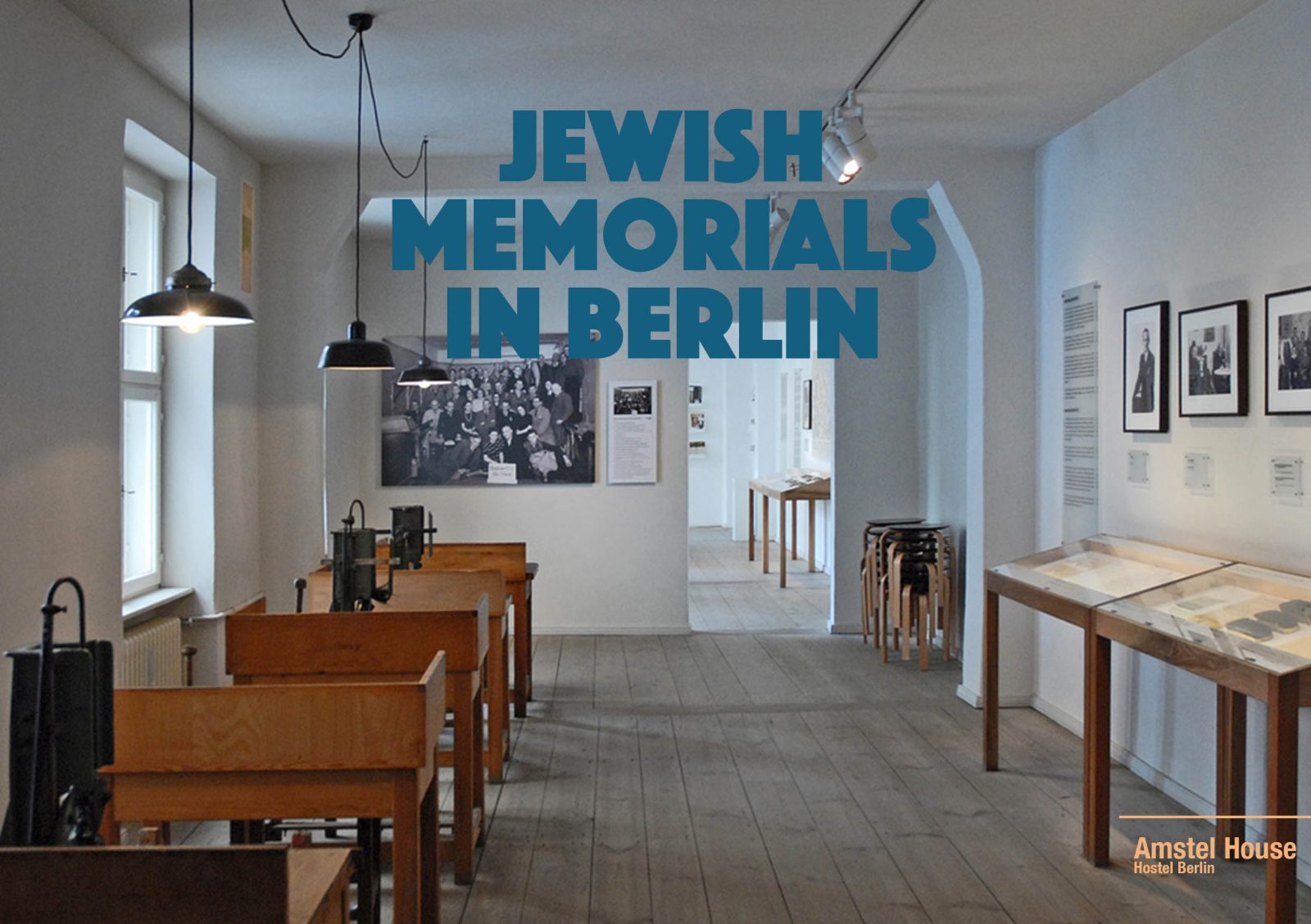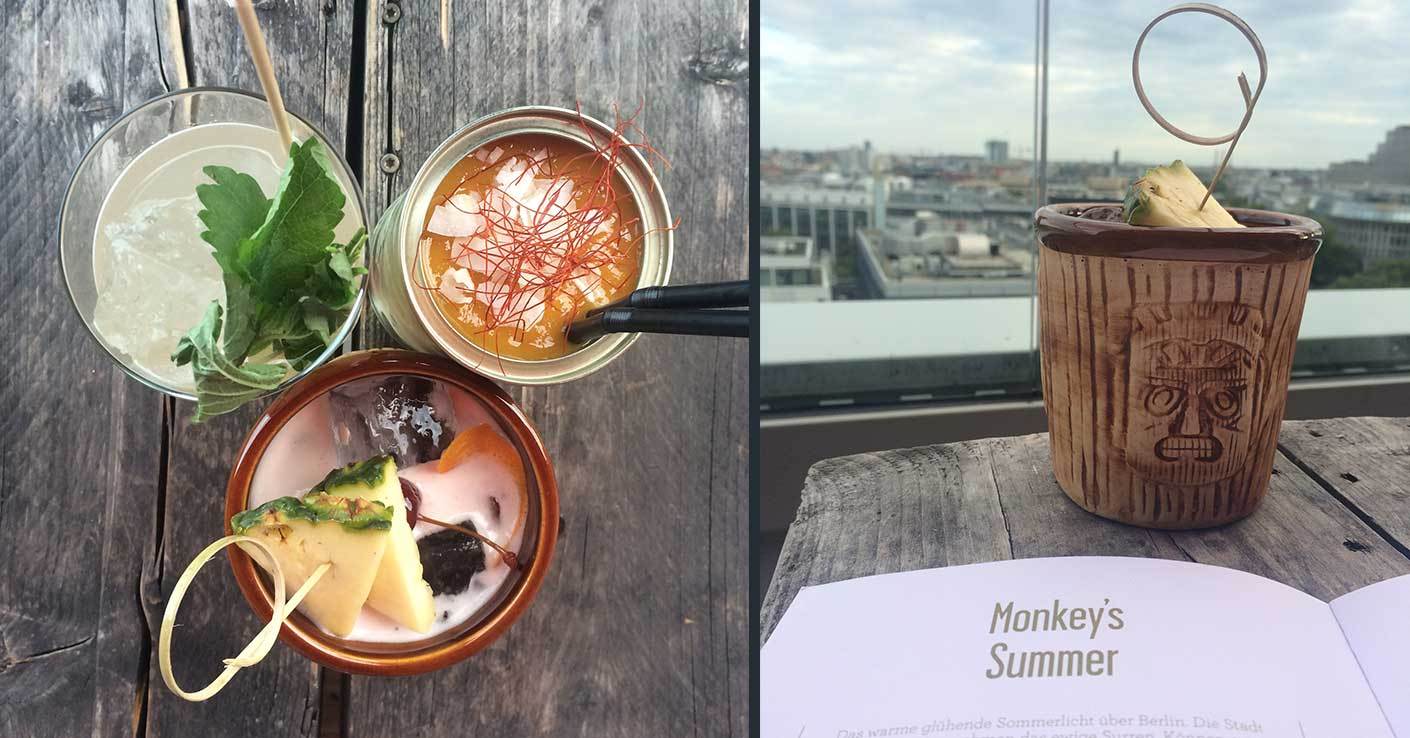
It might be almost 75 years ago, but impressive Jewish memorials in Berlin ensure we commemorate and never forget the victims of the second World War. We selected 12 Jewish memorials in Berlin. Some enjoy world fame, some are not well known by the larger public but are very deserving of a mention in this Berlin holocaust memorial guide.
Otto Weidt’s Workshop
Let’s start with a Jewish Memorial gem and a beautiful story not many visiting Berlin know about. Although its location, the Hackesche Höfe, has become quite popular lately. Many Jewish people worked and lived here before the war. But it owner of a brush factory Otto Weidt made it a safe haven for many blind an deaf Jews who he employed during the war. His workshop is now a museum.
Location Otto Weidt’s Workshop: Rosenthaler Str. 39
The Memorial to the Murdered Jews of Europe
Maybe the most well know of all Jewish Memorials in Berlin. An impressive sloping field of almost 3000 concrete blocks designed by New York architect Peter Eisenman in 2004 commemorates the 6 million Jewish victims that were murdered during the war. Underground, the museum holds the names of 3 million Jewish Holocaust victims. It is located near Brandenburg Gate in Mitte.
Location Memorial to the Murdered Jews of Europe: Cora-Berliner-Straße 1
Stumbling Stones (‘Stolpersteine’)
Stumbling Stones are 10 by 10 centimetres brass plates designed by artist Gunther Demnig. There are more than 7000 in Berlin and they bear the names and fate of the victims that were deported by the Nazis and mark their homes.
Location Stumbling Stones: find a map with all Stolpersteine in Berlin here.
The Wannsee Conference House
Fifteen leading Nazi officials met in this the Wannsee villa in January 1942 to decide on the ‘Final Solution of the Jewish Question’ (Endlösung der Judenfrage), the mass deportation and murder of European Jews in Poland. Today the villa serves as a Holocaust memorial in Berlin that informs people about the disastrous consequences of the genocide once discussed at the Wannsee.
Location Wannssee Conference House: Großen Wannsee 56-58
Track 17 Memorial (Gleis 17)
Berlin-Grunewald Station’s was the starting point of the horrific deportation of over 50,000 Berlin Jews between October 1941 and January 1945. In 1998 an official memorial opened at track 17 where most of the trains departed.
Location Track 17 Memorial: Berlin – Grunewald station (S7)
An ode to Jews in fashion: Hausvogteiplatz
Hausvogteiplatz was once the epic center of Berlin fashion. Jewish designers and stylists created fashion for fashion lovers all over Europe. The Nazi regime forced the designers to hand over their ateliers to their non-Jewish employees. The Nazi’s later destroyed Hausvogteiplatz during the war. A memorial consisting of high mirrors commemorates this once breeding ground for fashion design talent and its Jewish fashion entrepreneurs.
Location: Hausvogteiplatz
The Deserted Room
A table, a chair and another chair fallen down. Certainly a depicting setting and reminder of the 164.000 (of 173.000!) Berlin Jews that the SS brutally took from their homes without any warning. Located in a residential area in Berlin’s Mitte, so it is just a short bike ride from the Berlin’s friendliest hostel.
Location Deserted Room: Koppenplatz
Jewish Museum
A building in the shape of a broken Star of David designed by Daniel Libeskind. The Jewish Museum is one of Berlin’s most remarkable landmarks and most visited museums in Berlin. The museum offers temporary exhibitions, pop up installations and a permanent exhibition with an overview of the tumultuous German Jewish history. So it is definitely a ‘must visit’ Jewish memorial in Berlin!
Location Jewish Museum: Lindenstraße 9-14
The New Synagogue
Since its opening in 1866 the New Synagogue was the most impressive and astonishing synagogue in Germany. The synagogue was the only one to stay intact after Kristallnacht, the other 12 were burnt down or destroyed. Unfortunately the Allied forces bombed the synagogue in air strikes in 1943-1944. In 1995 the reconstructed New Synagogue opened its doors in 1995. So after 40 years the synagogue can finally take its impressive place back in Berlin.
Location The New Synagogue: Oranienburger Str. 28-30
Monument for the Jewish Victims to Fascism
The Große Hamburger Strasse once housed a Jewish school, cemetery and home for the elderly. In 1942 the Gestapo turned the school into a transit for Jews destined for deportation. The Nazi’s destroyed and vandalised the cemetery in 1943, making room for air raid shelters, using the grave stones for wall reinforcements. In 1945 almost 3000 Berlin war victims were buried here. In 1985 sculptor Will Lammert created the Monument for the Jewish Victims of Fascism (Denkmal für die jüdischen Opfer des Faschismus) here.
Location Monument for the Jewish victims to Fascism: Große Hamburger Strasse
Trains to Life – Trains to Death
An impressive bronze sculpture of 7 children across from the Friedrichsstrasse train station that stand for the fate of the Jewish children. Five children look one way, symbolizing the fate of deportation to the concentration camps. Two children gazing to the other direction represent the 10.000 children whose lives were miraculously saved by the Kindertransport to England, organized by London stockbroker Nicholas Winton. The first train left Friedrichstrasse station on November 30th 1938. Sculptor and architect Frank Meisler designed the sculpture and was himself one of the children on a 1939 transport to England. So however tragic, this sculpture also beautifully shows signs of hope in the darkest times.
Location Trains to Life – Trains to Death: Dorothea-Schlegel-Platz
Silent Heroes
The Silent Heroes (‘Stille Helden’) memorial honors all heroes who helped Jewish people during the Nazi regime. So it shows hope that even during a dictatorship, courageous Germans helped where they could. The exhibition shows how people successfully saved Jews but also attempts that failed.
Location Silent Heroes Exhibition: Stauffenbergstraße 13-14
Cover photo credits to Jean-Pierre Dalbéra



